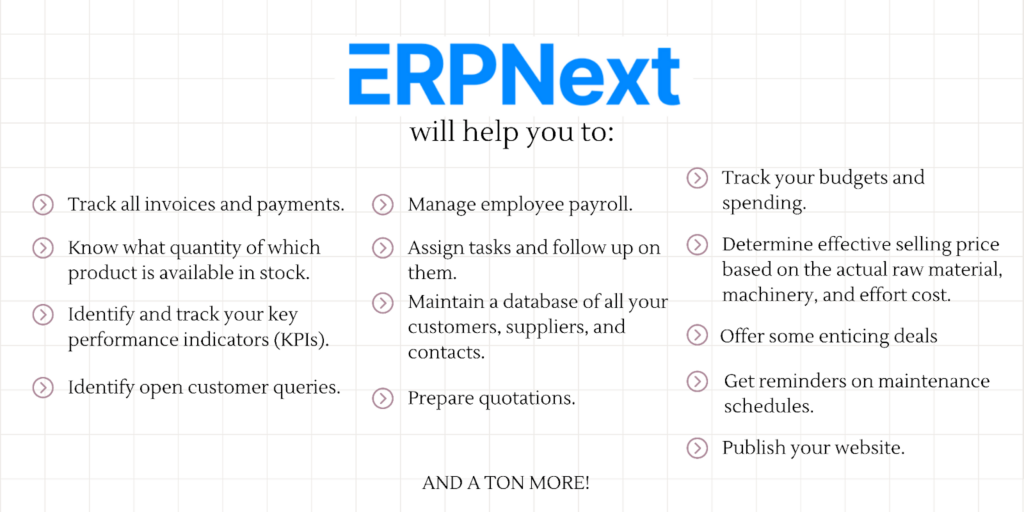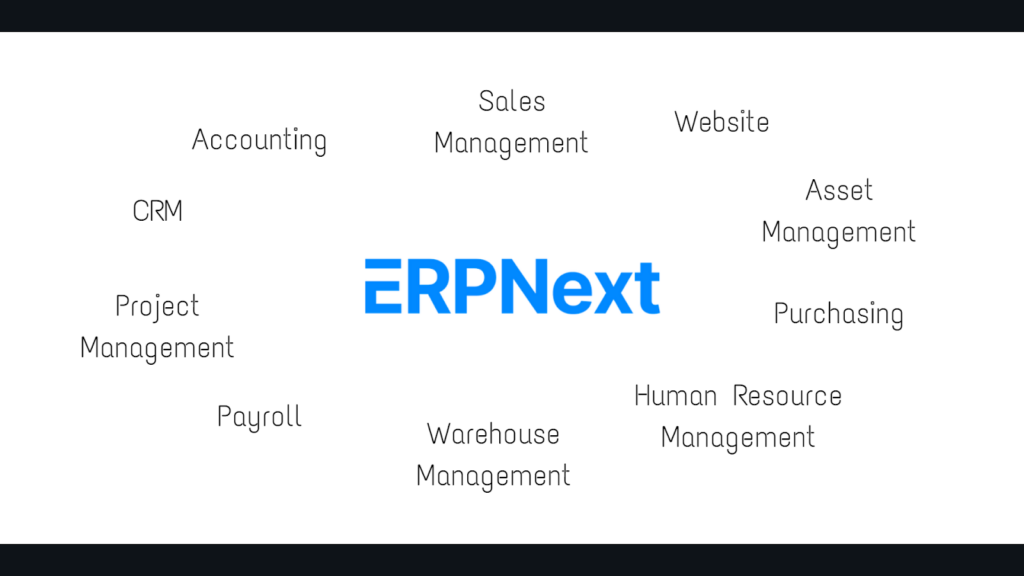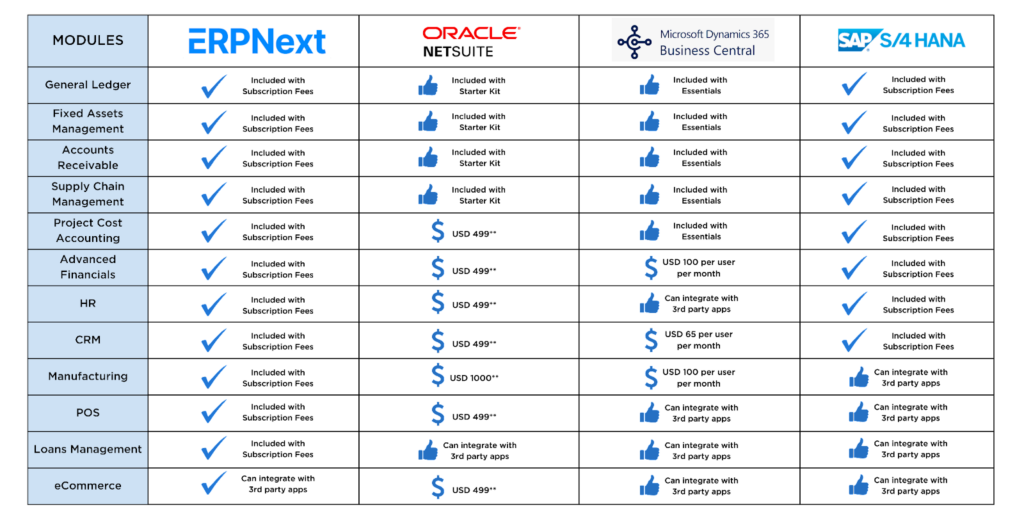ERPNext: The Perfect Comprehensive Cloud-Based Management Solution for Your Business
By Casey E. at
Xurpas Software

Running a business means operating, directing, managing, and overseeing a lot of moving parts that make up the entire business. In any given situation, you need to be able to keep track of all these moving parts, and staying on top of them is an essential key for the business to be successful.
The world is constantly changing, and with that comes new inventions that simplify even the most basic activities. Years ago, businesses were managed with the help of tally sheets and stacks of paperwork. Fast forward to today, and technological advancements offer us an Enterprise Resource Planning (ERP) system whose primary function is to facilitate the efficient management of businesses.
When it comes to a company’s potential for growth and expansion into new markets, having an Enterprise Resource Planning (ERP) system is now an absolute necessity. While the upfront cost of enterprise resource planning (ERP) software may seem high, the many benefits gained from its tightly integrated processes more than make up for it. Many companies also consider them to be investments rather than expenses.
In addition, the implementation of a business solution like an ERP results in an increase in both productivity and value. As a result, it is most appropriate to think of them as assets rather than liabilities. However, not all enterprise resource planning systems are built the same. Some are extremely advanced, while others are highly specialized.
ERPNext is a brilliant example of the type of software that will help your company with organizing and managing the work that is carried out by each department. If your company does not already have such software, you should strongly consider investing in it.
This is why:
WHAT IS ERPNEXT?
Hailed as “The most agile ERP on the planet,” ERPNext is a full-featured all-in-one business management solution that assists SMEs and even large businesses keep track and record all their business transactions in a single system.
Developed by Frappe Technologies Pvt. Ltd., ERPNext was first released in 2008. It utilizes the Python-based server-side framework known as Frappe, which is built on top of the MariaDB database management system. ERPNext is an enterprise resource planning (ERP) software that is used by a variety of businesses, including manufacturers, distributors, and service providers.
With ERPNext, businesses can make informed, fact-based, timely decisions to remain ahead of the competition. It can serve as the backbone of a business, adding strength, transparency, and control to a growing enterprise.
HOW CAN ERPNEXT HELP YOUR BUSINESS?
Check this out:

At a glance, ERPNext has just about everything a business owner needs to help them run their business. Contained within its footprint are the essential modules required to automate and streamline business operations. It is capable of tracking invoices and payments, tracking available stock, assigning tasks, maintaining a database of all customers and suppliers, preparing quotations, monitoring budget and spending, managing employee payroll, publishing a website and so much more.
IS ERPNEXT FOR SMEs or LARGE CORPs?
ERPNext is able to provide its services to a diverse set of companies, ranging from small and medium-sized businesses to large multinational corporations.
In today’s economy, small and mid-sized enterprises and large corporations all have the same challenges and concerns. Some of the problems that SMEs face are the same ones that big businesses do, and one of these is planning for and overseeing the management of their resources. Small and medium-sized enterprises even have to deal with similar complexities but have fewer resources to do so.
Small businesses, just like their larger counterparts, are also obligated to maintain accounts in order to keep tabs on their sales and purchases, file their taxes, pay their employees, oversee deliveries within the timeframes that were promised, provide high-quality products and services, communicate with customers, and respond to their questions and concerns, among other things.
On the other hand, these giant corporations put millions of dollars into the development of extremely complex software like SAP in order to combine their global businesses that span multiple countries, multiple companies, and multiple currencies onto a single platform. Because of this, they have been able to successfully achieve consolidation of data and records in fundamental processes such as accounting, taxation, payroll, reporting, and supply chain.
But what about start-up companies or other small to medium sized enterprises?
SMEs, in contrast to large businesses, were excluded from the first wave of the digital revolution (1995-2015). The main cause of their exclusion is that they lack the financial means to purchase licenses, employ programmers, and adapt such software to their needs.
Therefore, even in today’s modern world, it remains difficult for small businesses to keep their operations organized. A combination of spreadsheets, accounting programs, and customer relationship management systems are just some of the outdated and tedious applications and tools they use to keep track of their day-to-day operations.
Think about it: This means they need to go to multiple places to get information about things like customer master records, sales, cash flow, or profits. When data is stored in separate silos, obtaining alerts or useful insights becomes more of a challenge. As a result, SMEs frequently respond to issues rather than proactively avoiding them. In such a small workspace, there isn’t much room for growth.
Now, more than ever, the public at large, who could benefit the most from such a system, should be introduced to an easily accessible and fully featured ERP platform.
ERPNext strives to solve some of the most fundamental issues with resource management that many businesses, whether SME or not, face today:
Affordability: It is software that is both free and open source, and it can be downloaded and installed freely.
Completeness: All necessary modules that are needed are readily available. View full list.
Customization: Adding new fields or enhancing on existing features is a simple process.
Efficiency: Computing requirements are relatively low (cheaper to host and manage).
Wholesomeness: A unified platform and database that supports multiple simultaneous data collection and transaction recording for multiple users.
WHAT COMES WITH ERPNEXT?
ERPNext Core Modules

- Accounting
This is a fundamental feature of every ERP system available today. When accounting software is integrated with other business systems, it enables more efficient accounting procedures. Probably the most crucial component of any ERP is accounting.
- Sales Management
A sales management module facilitates operational and document-based recording of all sales-related activity. With the help of ERP Sales management software, you can easily manage global operations and keep track of all of your sales and distribution channels.
- CRM
ERPNext helps you track business Opportunities from Leads and Customers, send them Quotations, and book Sales Orders.
Companies use customer relationship management systems to learn more about their clientele and, in turn, improve their marketing and customer service strategies. In addition, businesses can improve the way they handle ecosystem relationships in order to upsell and cross-sell their software and other solutions. Integrating ERP and CRM generally allows staff to deliver better, more timely, and more individualized service to customers.
- Project Management
ERP Project Management is the process of organizing and managing a company’s resources to meet goals within a specified time and budget in the most effective and efficient manner possible to guarantee a smooth and successful business operation.
- Payroll
Processing employee paychecks is a crucial part of any company’s human resources department. ERPNext’s many helpful tools, such as its Salary Structure management and its mass Payroll processing capabilities, make this task much easier.
- Asset Management
“An Asset is any valuable Item owned by a Company.”
The Asset Management module should track asset purchase and disposition, scheduled and preventive maintenance, and costs and depreciation. In ERPNext, all asset transactions like purchasing, depreciation, maintenance, movement, scrapping, and sales are recorded.
- Purchasing
Purchasing or buying is part of running the business. Buying the right quantities affects cash flow and profitability. ERPNext contains a set of transactions that streamline the buying process.
ERP for purchase management aids in reducing inventory errors, providing accurate sales analysis, delivering exceptional customer service, and tracking every purchase made.
- HRM
Just like payroll, human resource management integrated with ERP can save time and streamline lengthy processes. ERPNext’s HR module manages employee attendance, records employees’ skills so they can be assigned specific tasks. It keeps contact information, salary details, attendance, performance evaluation, leaves, and appraisal records.
- Warehouse Management or Inventory Management
ERP provides accurate inventory data, which aids businesses in making better decisions. ERP inventory management systems give companies the ability to manage their finances, operations, logistics, and inventory from a single platform, cutting down on errors and increasing productivity.
- Website
Any business needs a website. A good website can be expensive, hard to update, and not effective. Wouldn’t it be nice if you could automatically update your website’s product catalog from your ERP? In ERPNEXT, you can build websites, write blogs, publish product catalogs, and even allow users to buy products directly from the website.
There are a whole lot more modules and features that ERPNext is able to provide. It proves to be the best all-in-one budget friendly ERP solution in the market today. Every ERPNext plan comes with every available module and feature. As a result, it’s a great choice for companies on a tighter budget that need a comprehensive service. Learn more about ERPNext’s core modules here.
ERPNext vs Competing Cloud-based ERP Offerings
**estimated monthly subscription fee

And the good news is?
ERPNext is able to offer all the core modules that users need in a single subscription plan at a single, all-inclusive price.
WHY IS ERPNEXT PERFECT FOR YOU?
Let’s look at it: It has the power to provide you with up to 1000+ objects to help you run your business.
ERPNext is:
- Very affordable for small businesses
- All-in-one solution with full access to every module
- An advanced search feature to easily find what you need
- Open source so everything is completely customizable
- Active customer forum
Whether you’re a small to medium business (SMEs) or a large enterprise, ERPNext is able to provide the most powerful modules in a single comprehensive platform.
ERPNext proves that ERP systems don’t have to be laborious and complicated to be useful. Not only is this system user-friendly, but it also has a powerful punch of features perfect for running a business.